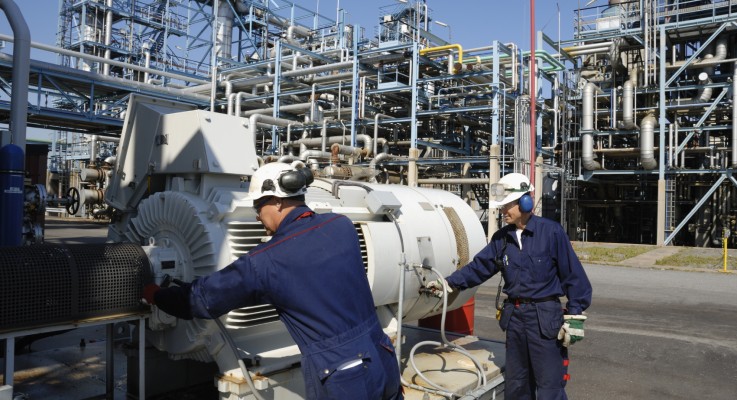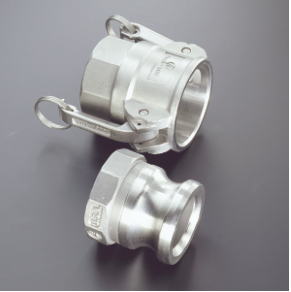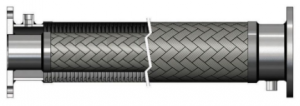
Chemical plants are one of the biggest industrial users of corrugated metal hose assemblies. Processes performed in the plants involve some of the most demanding environments:
- Temperatures ranging from extreme heat to cryogenics
- Mixing and transfer of hazardous compounds
- Equipment configurations that result in less-than-ideal piping situations
Metal hose can handle all of these factors and has some other inherent benefits over other hose types when it comes to the kind of applications seen in chemical plants. Let’s dig into some of the main areas of consideration and concern when dealing with chemical hoses.
Handling Considerations
Mishandling of hoses is one of the main contributors to premature failure. Because chemical plants have so many different inputs and outputs, hoses are often used to facilitate the transfer of chemicals from trucks, trains, or barges to the plant and even within the plant from one unit to another. Chemical blending manifolds are a great example of this, where a single hose assembly may be used for various connections at different times depending on what operations the plant is performing.

Metal Hose Attributes
There are several intrinsic features of metal hose assemblies that make them well-suited for chemical plant service. Chiefly among them is that they are not susceptible to permeation. This is a huge benefit for both operator safety, and plant safety. The metal core is puncture-resistant, and in the event of a leak, the hose will typically develop a small crack or pin-hole and does not burst apart!
Metal hoses also have a more compact end fitting configuration. Because end fittings are welded onto the end of the hose instead of a barbed or crimped mechanical attachment they don’t take up as much of the hose’s flexible length. This results in more working live length compared to non-metallic assemblies, which further facilitates handling and easier installation by the operators. It also means that metal hose is easily customized without the need for adapters. Stainless steel fabrication techniques provide the ability to use a wide array of fitting configurations, and can be tailored to prevent media entrapment, resist end-pull, or to accommodate high system pressures.
Finally, one of the handling benefits of metal hose is its light weight. Calling metal hose lightweight might sound contradictory, but pound for pound, metal hoses generally offer higher working pressures than rubber or composite chemical transfer hoses. This gives metal hose a wide range of potential applications, and also translates into easier handling and installation by operators.
Metal Hose Construction Options

to boost various performance aspects of a hose assembly. Because handling misuse and overbending are so common, a bend-restrictor is a good option that can be put on the outside of the hose. This short piece of stripwound armor makes sure that the hose is not overbent near the end fitting. While the internal makeup of the hose is important, at chemical plants the exterior of a metal hose can be equally important. Hoses can be subjected to the weather and the environment of the plant, and might be dragged or rubbed along concrete or metal including grates and other equipment. To protect the stainless steel braid (the component that gives the hose its pressure holding capability), various protective covers may be put over the hose to protect the braid wires from chemical and physical damage.

There are many factors that can contribute to handling issues with metal hose in chemical plants. Between the media being conveyed, the area of the plant in which hose is being used, and who is using the hose, there are many ways handling issues can arise. Not to mention, the climate of the area can play a part. With proper hose selection, fabrication, and accessories, many of the issues that the plant may face can be minimized or avoided.
But getting all of these variables under control can be a daunting task! If you have questions or concerns about an industrial hose application in a chemical plant, Contact us or call (800-221-2319) our Inside Sales team and we will be happy to assist you in hose selection and design!
Gallagher Fluid Seals is an authorized distributor for Hose Master. For questions or engineering inquiries about an industrial hose application in a chemical plant, contact Gallagher Fluid Seals' engineering team.
The original article can be found on Hose Master's website and was written by Erik Kane.
